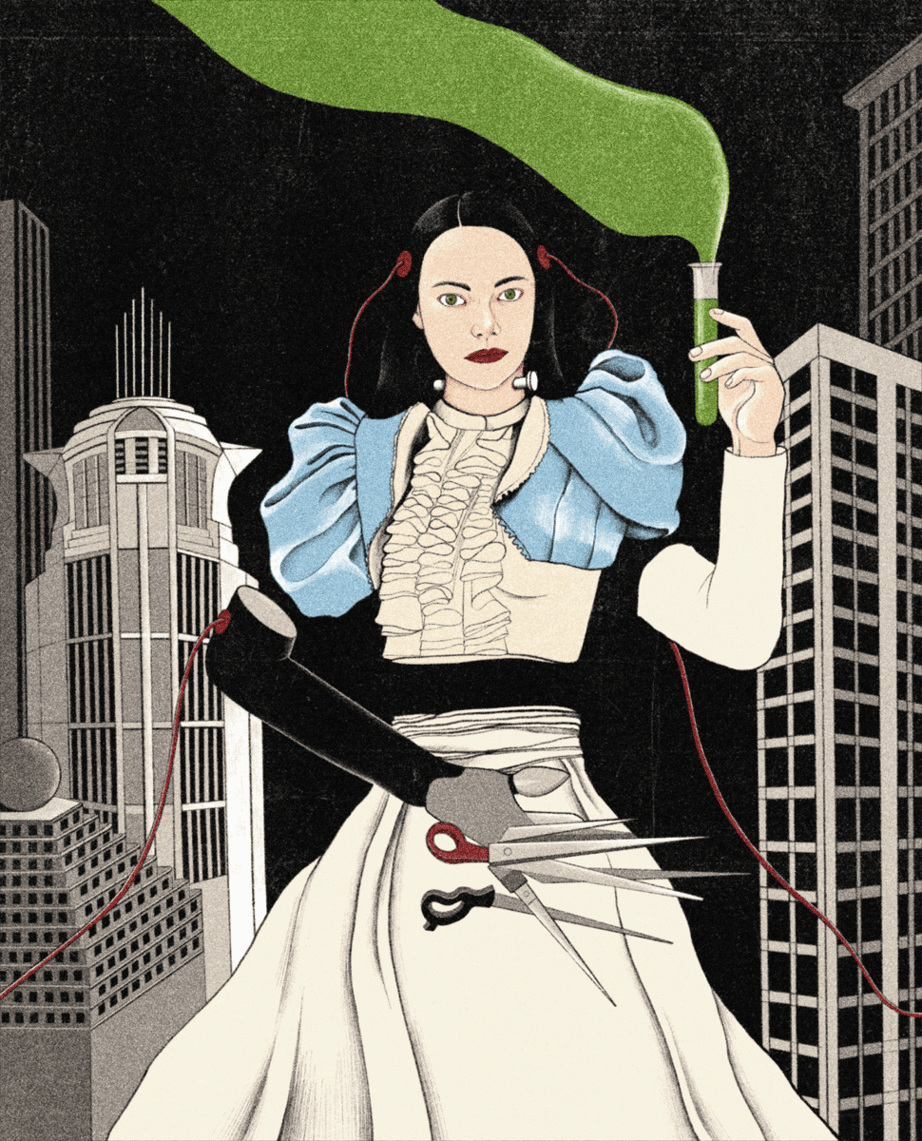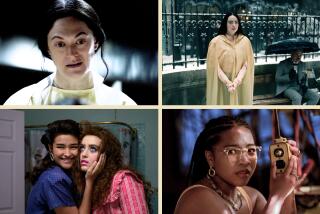A New Reading : Poetry: Did Shelley really believe in equality of the sexes? As his 200th birthday approaches, some scholars are saying no.
Spouse! Sister! Angel! Pilot of the Fate
Whose course has been so starless! O too late
Beloved! O too soon adored, by me!
--Percy Bysshe Shelley “Epipsychidion”
In this cosmic love poem, Shelley sets up his “beloved” Emily as the sun, his wife, Mary, a moon and her stepsister Claire, a comet. While the women have powerful roles, the fact is, all three women revolve around Shelley, the planet Earth.
This summer, he will again be the center of attention. Shelley fans--poetry lovers and scholars alike--will gather in Austria, Wales and England to remember his spirit with lectures, exhibits and readings. Yet, 200 years after his birth on Aug. 4, 1792, controversy continues to follow the poet labeled a dangerous rabble-rouser for his views on free love and equality of the sexes.
Ironically, there is a feminist backlash against the otherwise politically correct poet, who seems to be a man of contradictions. Feminists note that:
* At the same time that Shelley argued for equality, his works depicted women as mirrors and shadows of men.
* Shelley’s lofty ideals on free love brought tragedy and pain to women in his life.
But even among feminist scholars, there are differences of opinion on the poet who, in his brief 29 years, gave the world classics like “Adonais,” “To a Skylark” and “Ode to the West Wind.” Depending on whom you talk to, Shelley is either out of date or the man of the hour.
“Shelley loves being surrounded by women, but they are really there to satisfy his desires,” says UCLA English professor Anne K. Mellor. “The problem with his notion of romantic love is that he conceptualizes women as people who would complete himself. He never thought that he was completing women.”
Part of the anti-Shelley sentiment has to do with a change in attitude toward free love.
“In the ‘60s, free love was very hip,” says Mellor. “In the ‘80s, the women’s movement raised issues about the feminization of poverty and divorce that make Shelley’s laissez - faire attitude toward family more problematic.”
Mellor, whose opinion of Shelley comes partly from research for her study of the poet’s wife, “Mary Shelley: Her Life, Her Fiction, Her Monsters,” points out his less-than-winning track record.
He deserts his child and pregnant first wife Harriet Westbrook, who later drowns herself. He runs off with 16-year-old Mary Godwin and likely has affairs with her stepsister and others. On top of this, he neglects his children. According to Mellor, Shelley’s negative qualities inspired Mary to create the novel “Frankenstein,” whose protagonist gives birth to a creature without a woman and then abandons it.
“The creature spends most of ‘Frankenstein’ trying to find his family,” she says. “When it finally demands a mate, Victor Frankenstein rips her up, representing Shelley’s fear of the power of female sexuality.”
A markedly different reading comes from another feminist writer, Judith Chernaik, author of the upcoming novel “Love’s Children,” a fictionalized account of Shelley from the perspective of women in his life.
“I think Shelley was very sincere about feminism,” says the London-based novelist. “He actually bent over backward to worship women--especially Godwin--and genuinely believed in her genius.”
Chernaik categorically denies that Shelley was a neglectful father. “If you look at the poetry Shelley wrote both before and after his son William’s death, it’s full of feeling for the child. When he was dying, it was Shelley who tended to him.”
The seeds for “Love’s Children” were planted 20 years ago when Chernaik discovered a love poem that Shelley wrote to stepsister-in-law Claire Clairmont in an Oxford newspaper. “The poem stayed in my mind,” she recalls.
Her book contains letters and diary entries from Clairmont, Westbrook, Mary Shelley and her sister, Fanny Godwin that tell of life with Shelley.
“You get four stories in which Shelley is the unwitting villain,” concedes Chernaik. “His intentions are good, but the consequences were often terrible. This force that he generates that’s so attractive is also very destructive.”
In this Year of Shelley, Teddi Chichester, a UCLA graduate student, is also examining the poet’s ideas of love and selfhood.
“We can’t exult him as a women’s rights thinker as male scholars have done,” says Chichester. “There’s always a feeling that man has to rescue woman. The women in his works aren’t allowed to liberate themselves.”
Yet, Chichester is intrigued by his struggle to overcome a mass of contradictions. “Though sometimes he goes about it in a very backward way, he’s trying incredibly hard to identify himself with women. He always wants to surround himself with women--not in a superstar, Elvis Presley sort of way, but to be part of this sorority of women.”
Part of Shelley’s affinity for women was physiological, according to Chichester. She believes that with his unfashionable long hair, delicate features and high-pitched voice, the poet cultivated an effeminate persona. He was feminine, rather than feminist.
“Shelley came from a very feminine household with a beautiful, dynamic mother and four bright, attentive sisters,” she says. “He flourished in this environment and always tried to re-create the relationship with his mother through his wives, sisters and lovers.”
It’s this strong maternal influence on Shelley that Barbara Gelpi addresses in her new book, “Shelley’s Goddess: Maternity, Language, Subjectivity.” The Stanford University professor calls Shelley’s pro-feminist reputation a “total misnomer.” She says scholars have confused Shelley’s being on the same wavelength with women with being a feminist.
“Feminism is concerned about women’s status in the society for themselves,” says Gelpi. “Shelley couldn’t get past the notion of women as relational.”
For example, in one of his essays, “A Philosophical View of Reform,” Shelley raises the question of whether women should be given the vote and concludes the time is not right because women are not ready for it. “Like many men, Shelley found the notion of women as separately powerful in their own right quite scary,” Gelpi adds.
Part of the Shelley backlash has to do with the fact that, relatively speaking, the great women writers have been long ignored while Romantics like Shelley, Keats, Byron, Coleridge, Wordsworth and Blake have been idolized. Among those women: Percy Shelley’s own wife, Mary.
“Canons once established last a long time,” says Mellor regretfully. “The big shift in the last 10 years is to bring ‘Frankenstein’ into the canon. My students are now reading Percy Shelley to understand Mary Shelley.”
Others believe that rather than replacing the great men, the great women--Mary Wollstonecraft, Mary Shelley and the Brontes among them--will become integrated.
“In the last 10 to 15 years, as feminism has taken hold, there’s been a tendency to find fault with a lot of male writers,” says Chichester. “We don’t have to go back to the neglected works of the great female writers at the expense of male writers. There should be a side-by-side view.”
As the bicentennial approaches, Shelley sleuths are getting clues from a series of new editions of his manuscripts.
In the past, editors tended to standardize and clean up his texts. But University of San Diego professor Mary A. Quinn finds it more revealing to include revisions and other overlooked details in her editions of Shelley’s letters and notebooks.
“Once you look at Shelley in process, you see the work as it is taking shape,” Quinn says. “You see him making up his mind about things.”
Three of the notebooks being edited by Quinn are part of the Huntington Library’s manuscript collection. The tiny, pocket-size journals contain pencil and ink drafts of “Prometheus Unbound,” “The Mask of Anarchy” and “Ode to Heaven” written during Shelley’s travels in Italy.
Interspersed among the poems are doodles, drawings and financial calculations. Since paper was expensive and difficult to obtain, the poet would turn the books and write crosswise, sometimes in three directions.
The experience has left Quinn convinced that Shelley defies labels--feminist or chauvinist. “His life is filled with sensational events,” she says. “When you imagine the texture of his life, all our ways of capsulizing it are completely insufficient.”
Meanwhile, the fascination with Shelley’s life and debate over his work persists, long after his death in 1822, when he drowned during a storm.
“Shelley, while not beloved by feminists, is nonetheless interesting to them,” says Quinn. “Whether you like him or hate him, he appeals to a wide range of diverse, even opposite readers. His subjects and the way he treats them have a relevance to people that continues.”
More to Read
Sign up for our Book Club newsletter
Get the latest news, events and more from the Los Angeles Times Book Club, and help us get L.A. reading and talking.
You may occasionally receive promotional content from the Los Angeles Times.







